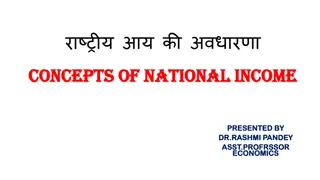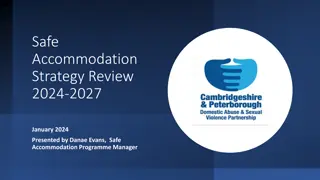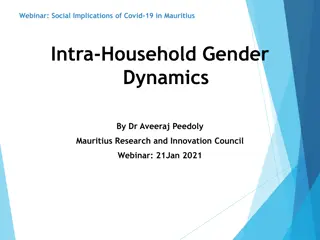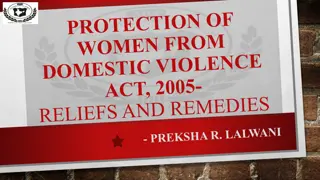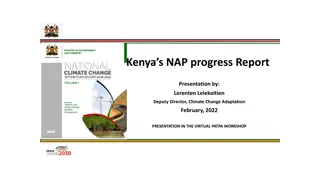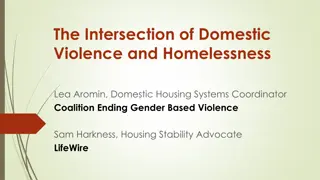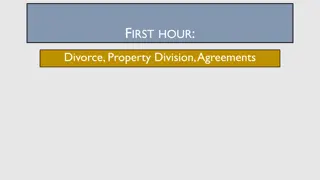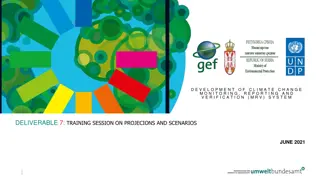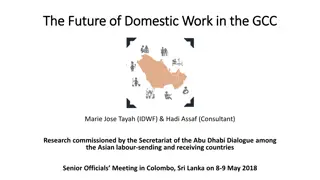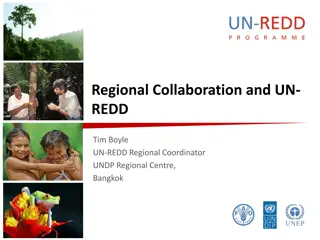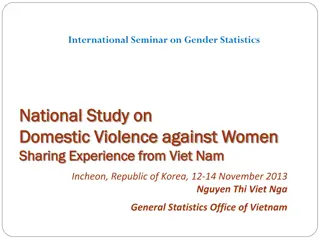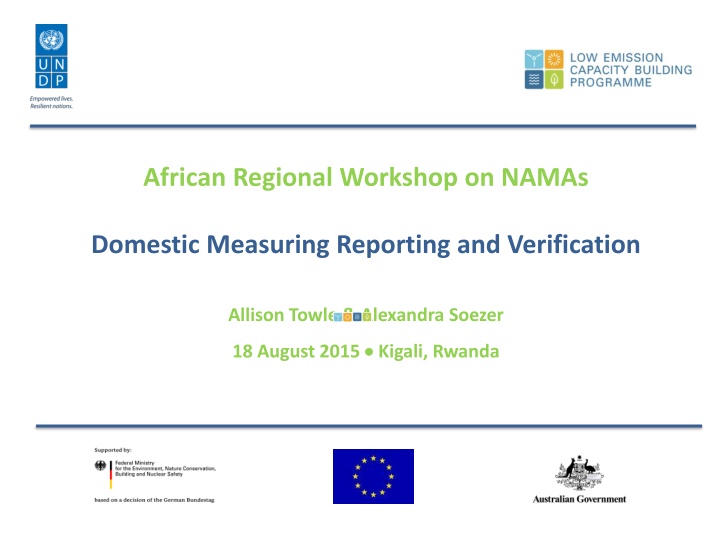
NAMAs in Low Emission Capacity Building Programs
This content discusses the importance of Measurement, Reporting, and Verification (MRV) in the context of Low Emission Capacity Building Programs, focusing on the African Regional Workshop on NAMAs. It covers key areas such as GHG inventory management systems, Nationally Appropriate Mitigation Actions (NAMAs), and the role of donors like the European Commission, Germany, and Australia. The content also highlights the levels of MRV implementation across different sectors and countries, as well as additional factors being measured in relation to GHG emissions. Capacity building and collaboration with external agencies are emphasized as critical components for successful MRV processes.
Download Presentation

Please find below an Image/Link to download the presentation.
The content on the website is provided AS IS for your information and personal use only. It may not be sold, licensed, or shared on other websites without obtaining consent from the author. If you encounter any issues during the download, it is possible that the publisher has removed the file from their server.
You are allowed to download the files provided on this website for personal or commercial use, subject to the condition that they are used lawfully. All files are the property of their respective owners.
The content on the website is provided AS IS for your information and personal use only. It may not be sold, licensed, or shared on other websites without obtaining consent from the author.
E N D
Presentation Transcript
African Regional Workshop on NAMAs Domestic Measuring Reporting and Verification Allison Towle & Alexandra Soezer 18 August 2015 Kigali, Rwanda Afficher l'image en taille r elle
Low Emission Capacity Building (LECB) Programme (2011-16) Objective: Build capacities to design and implement low emission development through national mitigation actions in the public and/or private sectors in 25 countries Five main work areas: GHG inventorymanagementsystems Nationally Appropriate Mitigation Actions (NAMAs) Low-Emission Development Strategies (LEDS) Measurement, Reporting and Verification (MRV) Participation of selected industries in mitigation actions Donors: European Commission, Germany & Australia
Measurement, Reporting, and Verification (MRV) - Technical paper
Of the countries who responded almost all were using at least one level of MRV National 65% 11 Sectoral 71% 12 59% Project / Firm Level 10
GHG emissions Other Other factors being measured: General co-benefits Energy consumption Economic indicators Socio-economic indicators Finance/Support 41% 59%
NAMAs 16 94% National Communication 12 71% National GHG Inventory 10 59% Biennial Update Report 10 59% 53% Low Emission Development Strategy 9 Mitigation Action Plan 7 41% Nationally Determined Contributions 5 29% Other 5 29%
Managed internally Other 18% Capacity building and gaining buy-in from external agencies is critical. External agency offer important technical expertise 82% Formalizing terms of relationship is important
External legislation/regulation No external framework 24% 76%
New 6% Existing 12% New and existing GHG inventory think laterally about what data you can use NAMAs - existing data is an excellent resource for QA/QC & verification 82% New data leverage off existing
Other agencies 12 71% Sectoral experts 11 65% National statistics bureau 10 59% Industry groups 7 41% Other 5 29% Direct measurement 1 6%
12% Not yet determined IPCC 6% ISO 6% Basic checks 76% IPCC 2006 Guidelines provide great resource for QA/QC techniques!
A concrete example: Ghana s Integrated Climate Data Management System
Ghanas Integrated Climate Data Management System Objectives: Provide reliable basis for climate change planning Serve as a framework for M&E and MRV Integrate with the national statistics platform Key elements: They keep it simple but aim at consistent improvement towards dynamic climate data management system in the future. Continuous data generation Before they start they clearly define: (a) why we need documentation, (b) what to document, (c) how to document, (d) who documents, (e) where/how to store and retrieve IT Network for sharing & clearing house Climate data managemen t infrastructur e and applications Documentatio n & archiving
Lessons Learned Challenges Executive level governance frameworks are a valuable alternative to legislation/regulation Slow pace in establishing data sharing network . Difficulty in data sharing No need to reinvent the wheel.: Data generation can be expensive. Funding is a problem. Existing data sources are a valuable resource for both national and NAMA level MRV systems Augmenting existing data collection process can provide a valuable means to collect new activity data Find a way to engage others Involvement from the private sector. Data confidentiality can be an issue for Industry and private held companies Setting up stand-alone IT infrastructure and maintenance can be expensive. Adopting a systems-based approach is important for effective MRV

